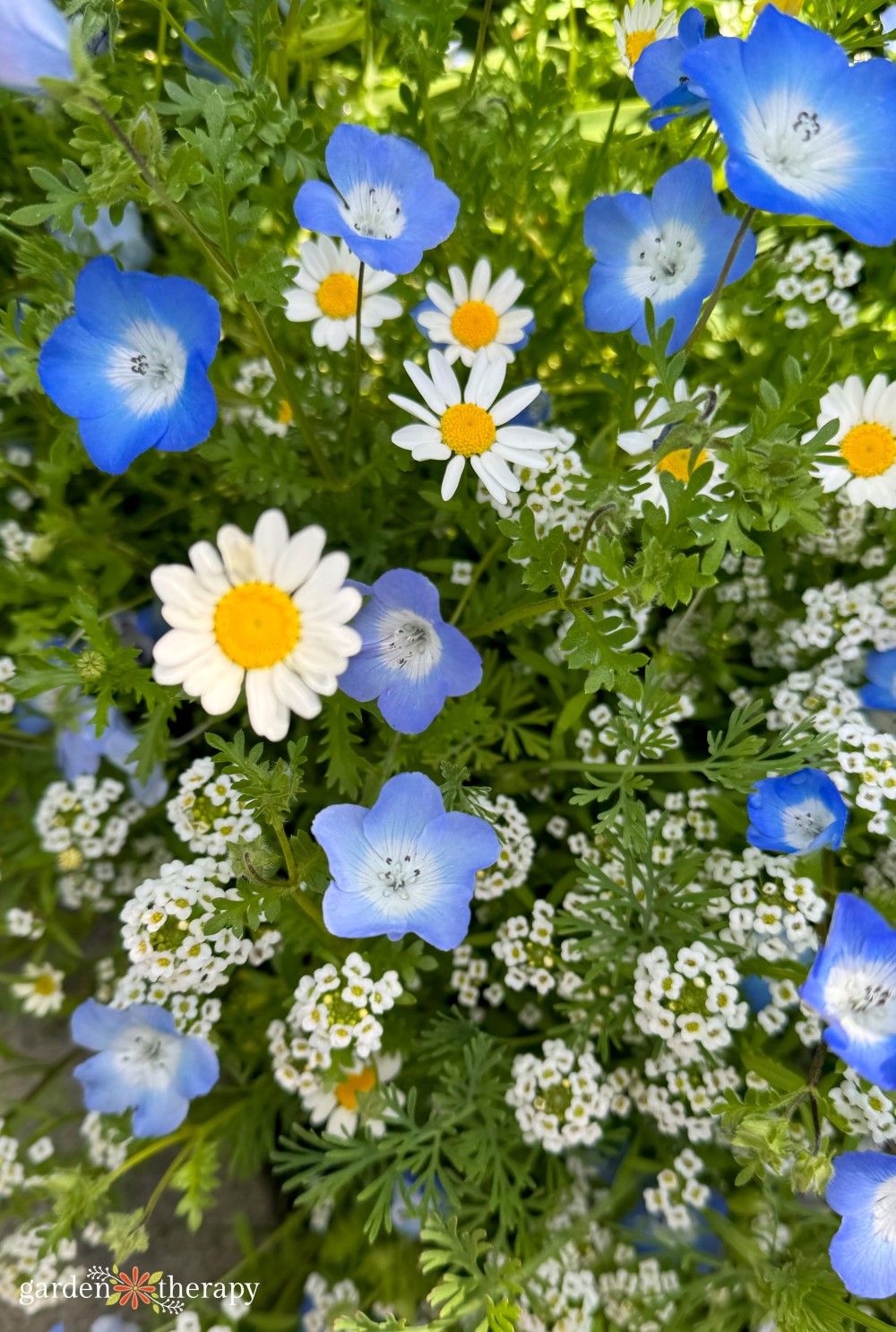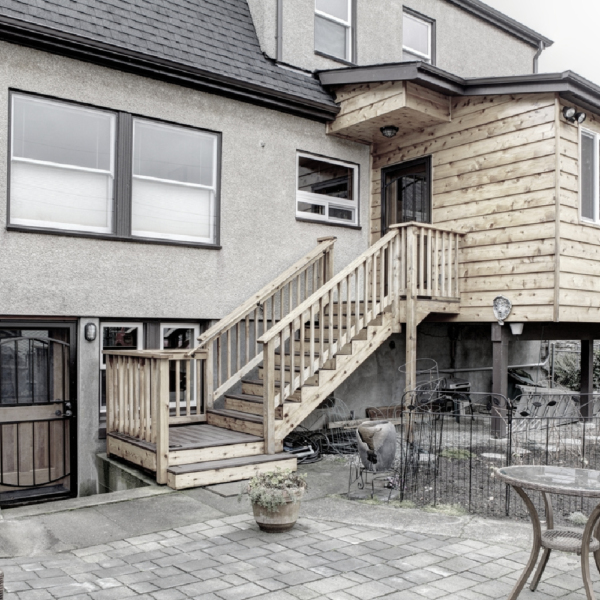My wildflower front yard has turned my house into the talk of the town. Everyone loves it! What was once a drab, uneven, and neglected lawn has turned into an urban meadow that is not only stunning but incredibly low maintenance and eco-friendly. Here’s how to transform your property using a wildflower alternative lawn mix!

When I moved into my new home, I knew it would need a ton of tender loving care to get it into a working and beautiful space. But I was up for the challenge!
In the backyard, I’m still deciding where to put my patio and garden beds. For the first little while, I had to find a parking spot for my trailer, which took much of my time.
So, when it came to gardening, I started with the front yard. The space was a mixture of uneven ground that quickly filled with water in my rainy Pacific Northwest climate. The lawn was patchy and very neglected.
It was a big UGH.
I’m happy to say that my front lawn is now one of my biggest sources of joy…and that’s because of wildflowers!
I want to shout from the rooftops that everyone needs to give up the old and demanding process of a front turf lawn and opt for an alternative lawn instead. And today, I’m going to tell you how I turned my front lawn into the heavenly meadow it is today.
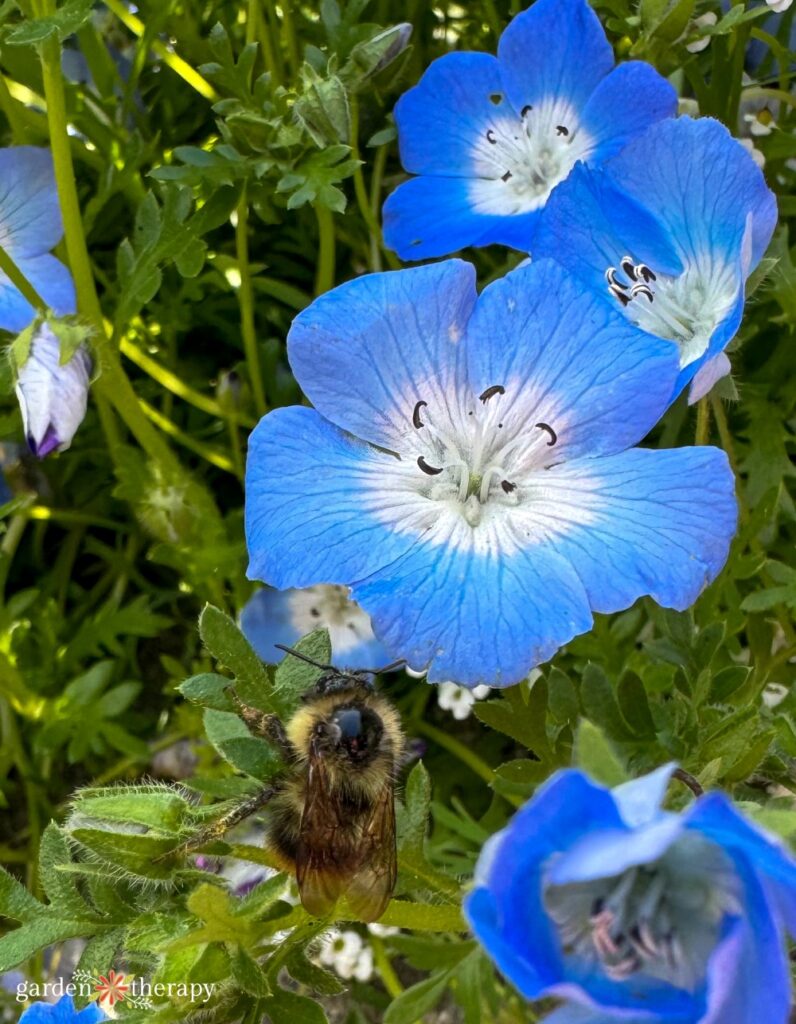
My Front Yard Eco Lawn
My front yard project began in the fall when I planted over 1500 bulbs in my front garden to create a bulb lawn in the spring. I won’t go into detail here, but you can read all about that project in this post!
So, in the spring, while enjoying the first blooms of the season from my bulb lawn, I pondered what kind of alternative lawn mix I would use. Since I loved the flower bulbs so much, I thought, why not keep the flower train chugging along?

I ended up choosing the West Coast Seed Alternative Lawn Mix Wildflowers.
Many flowers are still yet to come, but here’s what is in the mix and what has bloomed already.
- Baby blue-eyes (Nemophila menziesii)—LOTS of these.
- California poppy (Eschscholzia californica)—blooming!
- Creeping daisy (Chrysanthemum paludosum)—blooming!
- Dwarf California poppy (Eschscholzia caespitosa)—also booming!
- Five-spot (Nemophila maculate)—there’s a few in there.
- Hard fescue (Festuca trachyphylla)—can’t really see any grasses. They might be filling in the gaps.
- Johnny jump-up (Viola cornuta)—not blooming yet.
- Sheep fescue (Festuca ovina)—no grasses visible to me.
- Sweet Alyssum (Lobularia maritima)—lots of this!
- White dutch clover (Trifolium repens)—also lots of this.
- Wild thyme (Thymus pulegioides)—not spotted yet.
- Yellow daisy (Chrysanthemum multicaule)—not blooming yet.
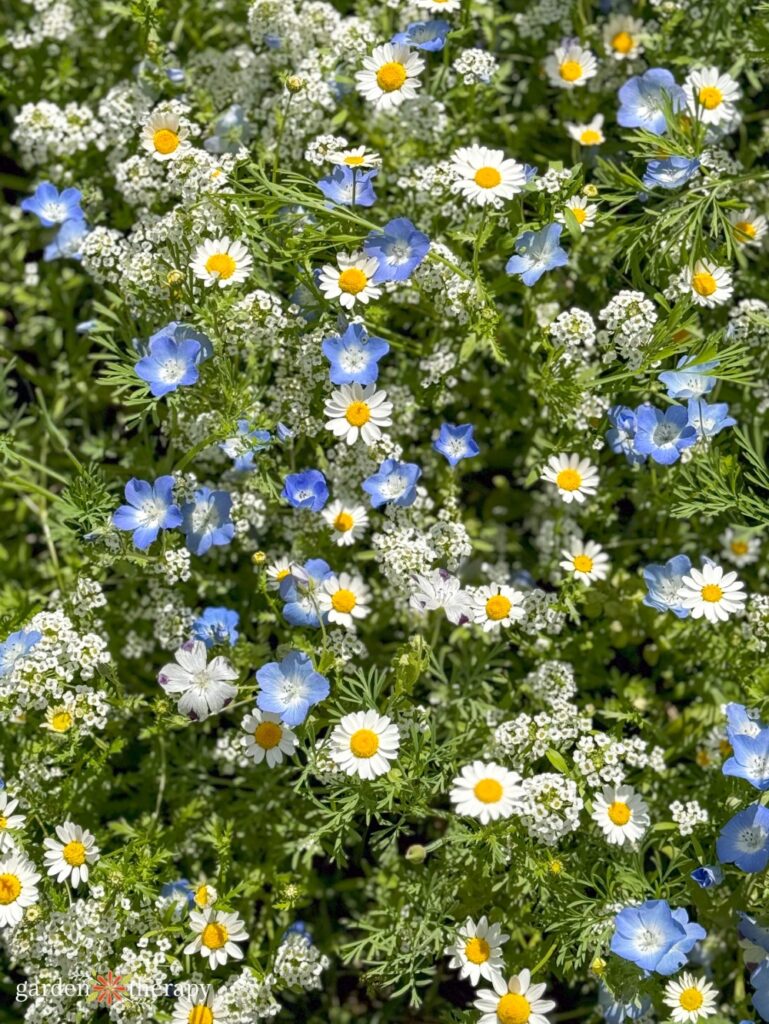
Is My Alternative Lawn Treadable?
Since this is my front yard, it won’t be getting a lot of traction. Kiddo is no longer a little, and I don’t need to worry about using it as a play space or somewhere for Ozzie to play ball.
So I’m totally okay with it growing about a foot tall or a bit taller. As of now, it’s only about 6-12 inches tall fully grown in.
If you or your animals step on it, the flowers will flop down where they’ve been and take a while to bounce back up. But they will eventually.
If you want something you can walk on without issues, you’ll want a different mix. That’s exactly what I did for my backyard!
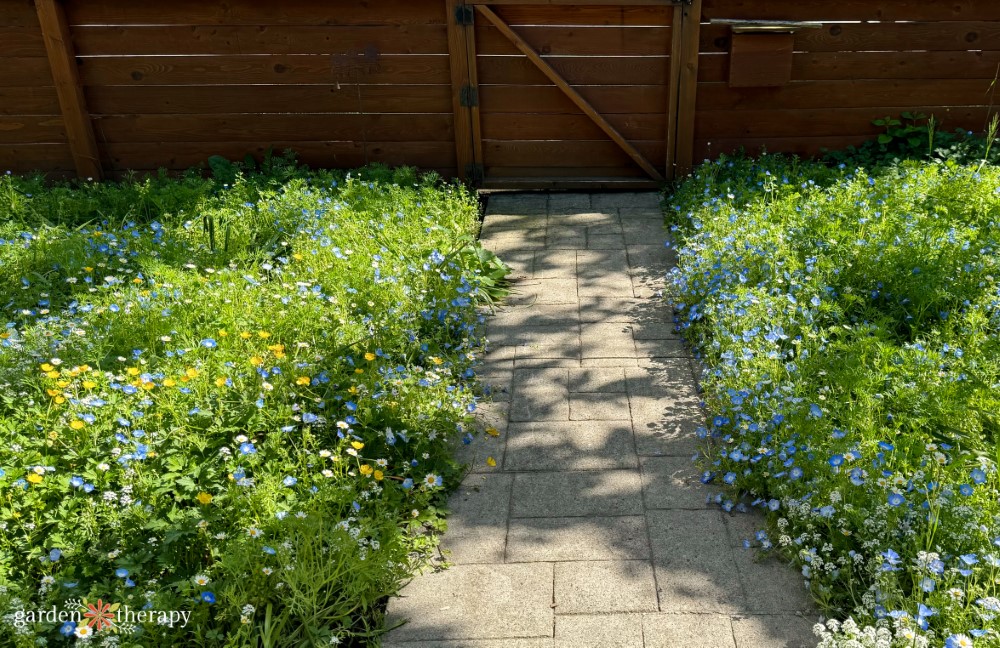
My Backyard Eco Lawn
This post will mostly be about my gorgeous, beautiful, stunning, and fabulous front lawn (can you tell I’m obsessed?), but I want to mention what’s going on with my backyard as well.
For the backyard, I used West Coast Seed’s Bee Turf alternative lawn mix. This mixture, which is designed to replace conventional lawns, is a mixture of clover and low-growing wildflowers.
I knew that my backyard would need to be more walkable, and it wasn’t in as bad of shape as my front yard, so this was the ideal option.
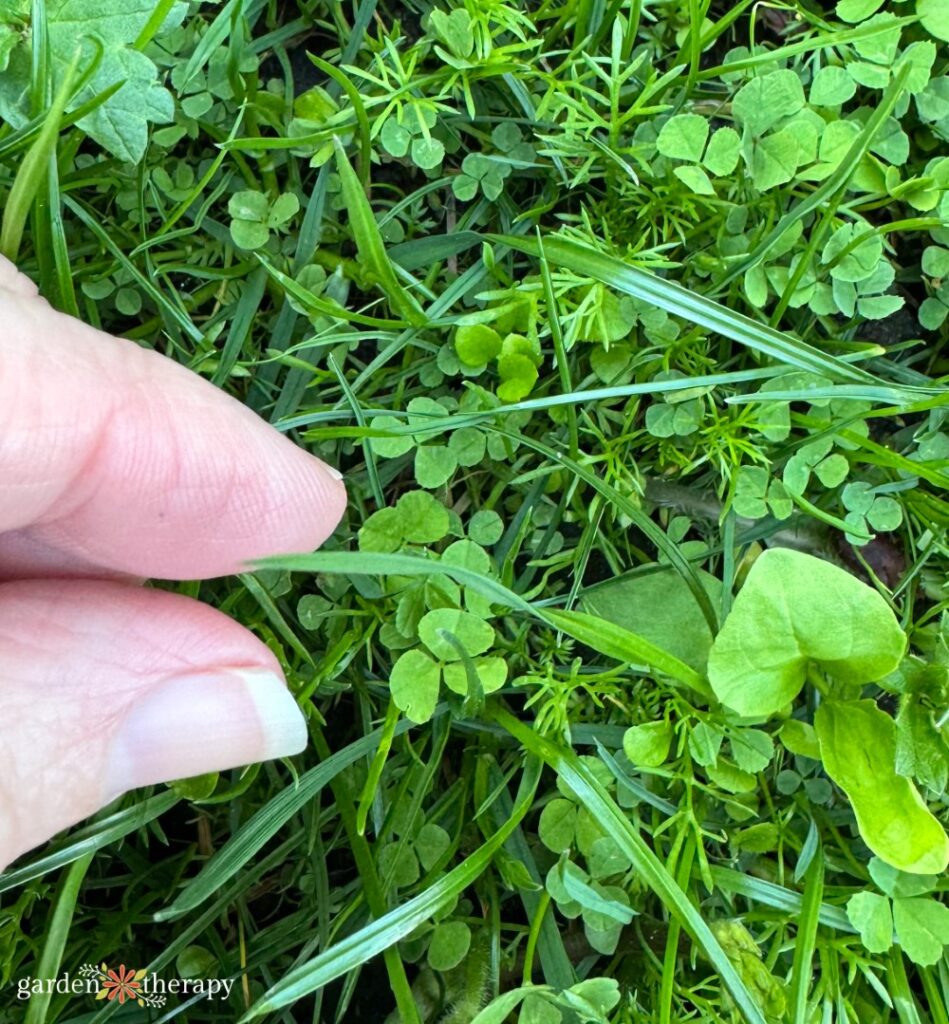
Rather than covering the entire lawn, I mixed it in with the existing lawn and used it to cover some patches.
I will say it didn’t grow at all in the shade. Not even a little bit. But in the areas where there’s full sun, it filled in really nicely.
Like I said, it’s low-growing, so it looks a lot more like a conventional lawn but is much more eco-friendly! You don’t have to mow it nearly as often, it requires significantly less water and fertilizer, is resistant to weeds and chafer beetles, and increases habitat and forage for pollinators.

My Alternative Lawn Planting Methodology
I have something to confess. I didn’t really follow the instructions on how to grow my front yard alternative lawn properly, but you saw that it still turned out amazing!
My method of planting is rooted entirely in chaos gardening. I go in with the mindset that nothing needs to be perfect, and I’m just trying to get things done in those moments when I can garden. So, following the same methodology as me might make some a little uneasy, as many like to go by the book.
The recommendation is that you remove as much of the existing vegetation as possible and loosen up the soil. I didn’t do that.
My lawn was VERY uneven and full of moss, grass, and buttercup. Even though buttercup is an invasive weed, I left it all and instead covered the entire lawn with a turf soil blend made of sand and compost.
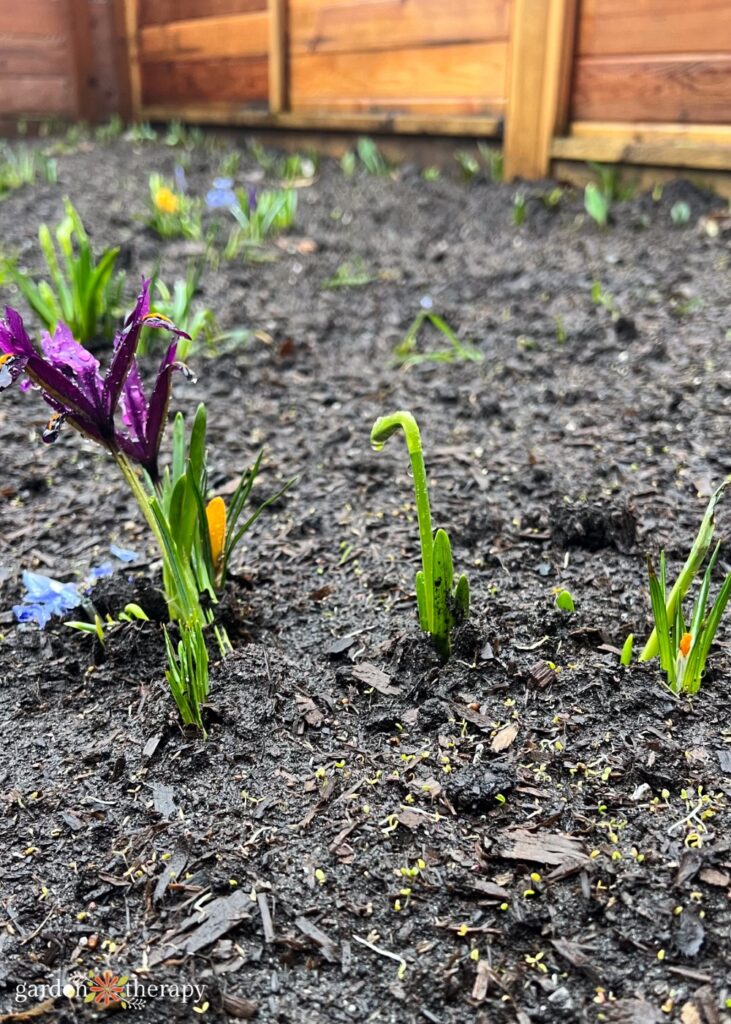
I used a rake to level out the lawn as best I could and then seeded my wildflower alternative lawn on top of it, using the rake again to blend the seeds into the soil.
The grass has now popped up amidst the wildflowers, and the buttercup, too, but I don’t mind, as it doesn’t look out of place with all the wild plants in there.

The other thing I did outside of the instructions was planted way too early. West Coast Seeds suggests you plant two weeks before your last frost date, but we had a strange winter, to say the least.
We had a very warm spell in mid-winter, and I saw this as an opportunity to get a head start on the lawn. After all, due to the top soil and rain, the lawn was mud at this point!
This worked out really well for me. Yes, I definitely had some losses, as I saw some heaving after we got a big frost (see below!). I’m not sure how the lawn would look if that didn’t happen, but I’m perfectly content with how it looks today.
Sun vs Shade Germination
I mentioned that the backyard didn’t germinate in the shade at all, and it didn’t fare well in the front yard, either.
The sunniest part of the yard had the most and earliest blooms. The plants right by my shady fence have all grown in now, but I supplemented it with some shade turf grass to fill in some of the spaces since some of the flowers weren’t growing without any sunshine.
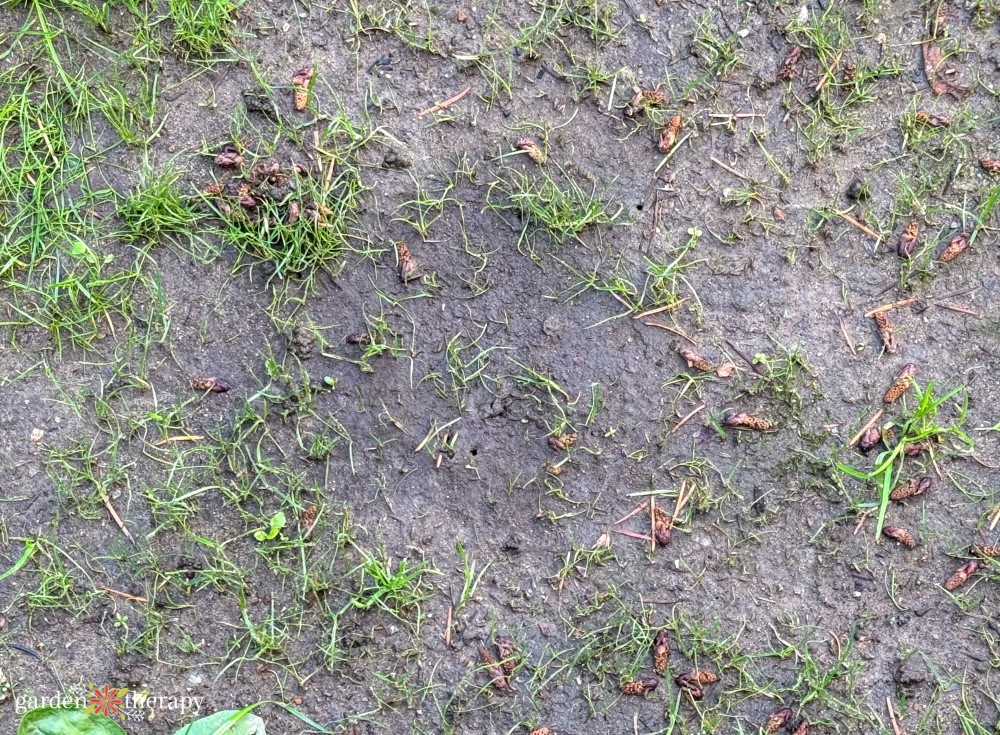
But that is just the small patch along the fence. Now, it looks pretty even overall. All the time, people on the street stop to look at the lawn and I get so many compliments on it.
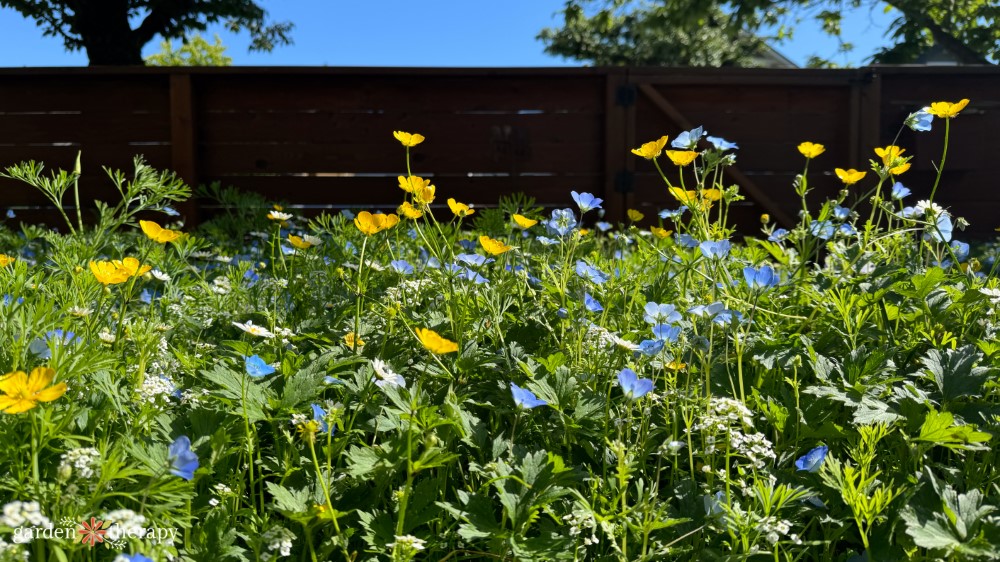
Watering Needs
As I’m writing this, I haven’t watered my lawn once. Yes, NO extra water has been needed.
It’s the number one question I get from people who pass by on the street as they ask me how much water it needs.
One of the reasons I planted it early on was so that I could get the seeds in right before it rained. I live in a very rainy climate, so I didn’t need any supplemental watering while the seeds were young and germinating.
According to West Coast Seeds, the lawn should only need water during long periods of hot and dry weather, so they should be able to handle most of the summer without any additional water. Which is not something the conventional lawn can say!
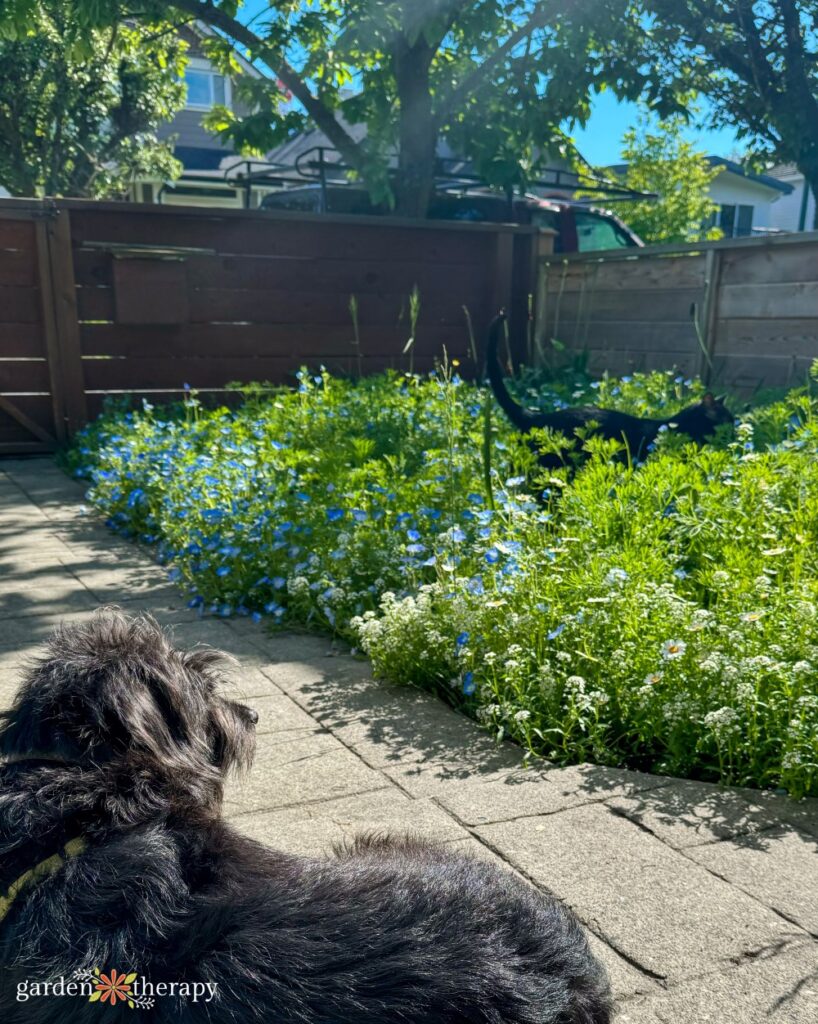
Mowing My Eco Lawn
I have yet to mow my wildflower lawn, and the flowers currently range from 6 to 12 inches tall. I may mow it as I go along, but as of right now, I have no plans to mow my lawn.
The wildflower alternative lawn mix is a blend that isn’t intended to be mowed. The plants mature and go to seed, planting themselves and continuing to grow like a meadow.

West Coast Seeds suggests controlling growth with a string trimmer, but if you really want a manicured look, to mow once a month to 2 ½ to 3 inches. Keep in mind, the more you mow, the less blooms you have.
If you want something more manicured, a low-growing alternative lawn mix like the one I have in my backyard would probably be a better option for you, and you still only need to mow once a month.
I’ll say, I definitely overseeded. West Coast Seeds suggests that 50g should cover 430 sq. ft., and I pretty well doubled that. To say my wildflower lawn is luscious is an understatement!
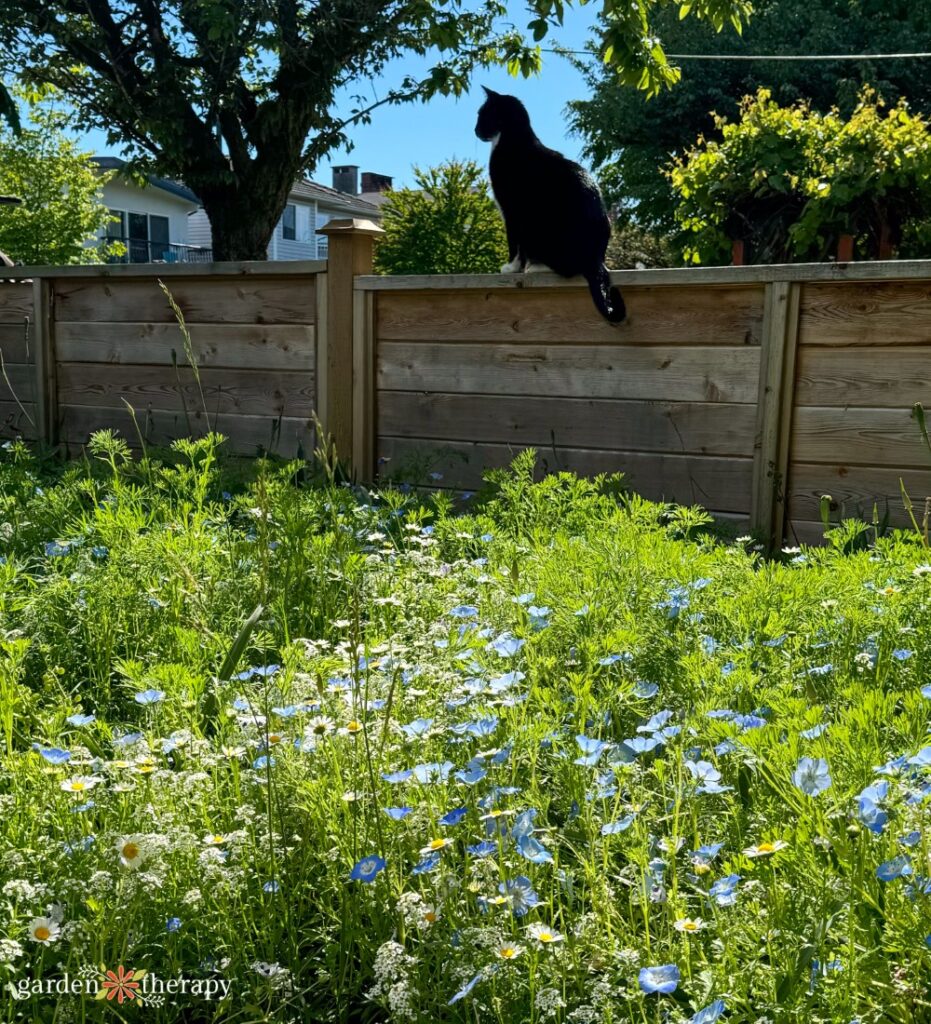
And there you have it! That’s how my alternative lawn turned out, and I absolutely couldn’t recommend it enough. I won’t have to mow or water my lawn, and the bees are absolutely loving it.
If you have any questions about growing your own eco lawn, let me know in the comments below, and I’ll answer them as soon as I’m able.
